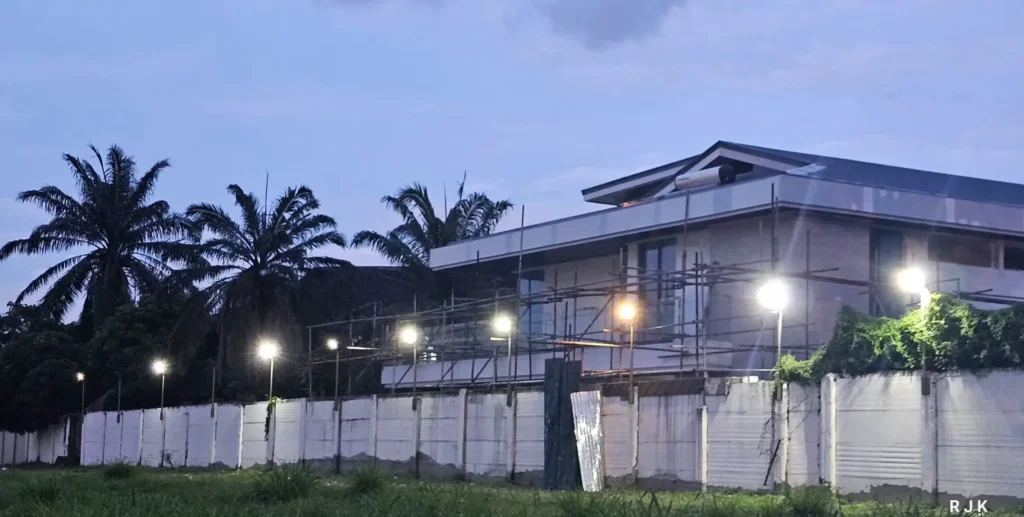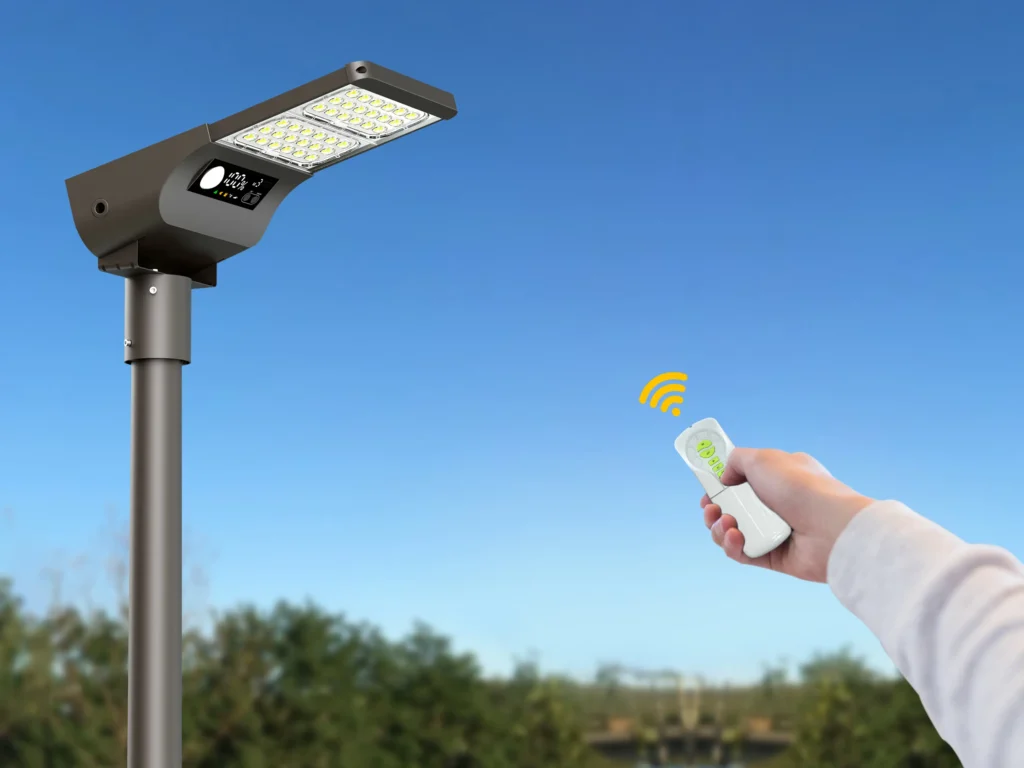Project Overview
-
Project Name: SSL-53 Solar Street Light Installation in Philippine Villages
-
Project Location: A remote village in the Philippines
-
Product Model: SSL-53 Solar Street Light
-
Project Scale: Installation of 50 solar street lights covering the periphery of houses and the main road, with a total length of 400 meters
-
Project Objective: To provide energy-saving, efficient, and sustainable lighting solutions to improve the nighttime travel environment for residents and enhance the safety and quality of life within the community.
Background Analysis of the Project
1. Regional Context and Demand Analysis
The Philippines, an island country in Southeast Asia, is characterized by poor infrastructure in remote villages.
-
Insufficient Grid Coverage: The power supply in remote villages in the Philippines is unstable, and traditional lighting systems are often ineffective. As a result, residents typically rely on fuel lamps or small generators for night lighting, which are costly to operate and result in high carbon emissions.
-
Security Concerns: The lack of nighttime lighting compromises community safety and increases the risk of accidents during nighttime travel, especially on roads and in residential outskirts.
-
Climatic Conditions: Due to the tropical monsoon climate with frequent heavy rainfall, conventional lighting fixtures are prone to moisture damage, leading to increased maintenance costs.
2. Policy Support and Market Potential
-
Government Policy: The Philippine government actively promotes the Rural Electrification Program, encouraging the adoption of solar and other clean energy systems to reduce power shortages in remote areas. The SSL-53 project aligns with this policy.
-
Community Feedback: Local residents have expressed a strong need for reliable nighttime lighting, particularly in schools, community centers, and roadside areas, aiming to enhance the living environment with a stable and long-lasting lighting system.
Technical Program Design
1. Product Selection: SSL-53 Solar Street Light
-
Solar Module:
-
Photovoltaic Panel: 120W high-efficiency monocrystalline silicon solar panel with a photoelectric conversion efficiency of 22%. The panel is corrosion-resistant, waterproof, and dustproof.
-
Energy Storage System: 40Ah lithium battery with an intelligent Battery Management System (BMS), maintaining over 5 days of power even during consecutive rainy days.
-
-
Lighting System:
-
LED Light Source: Color temperature of 4000K for a natural light effect, delivering uniform illumination with an efficiency of 160 lm/W and an effective lighting diameter of up to 8 meters.
-
Intelligent Control Module: PIR infrared sensing system that activates bright light when people are present and dims when they leave, effectively reducing battery consumption.
-
-
System Protection Design:
-
Protection Level: IP65 for complete dust and waterproof capability.
-
Impact Resistance: IK08 rating, ensuring reliable operation under severe weather conditions (typhoons, heavy rain).
-
2. Project Implementation Planning:
-
Coverage: Installation of 50 lights around house perimeters and both sides of the main road, with lamp pole heights of 3-5 meters and spacing of 8 meters to ensure even lighting.
-
Construction Steps:
-
Pre-research: Analyze village topography and traffic nodes to ensure lighting coverage exceeds 90%.
-
Equipment Installation: Utilize a modular installation approach, eliminating the need for cable laying, and completing the process within 5 days.
-
System Debugging: Adjust sensor sensitivity and lighting angles to optimize illumination without causing light pollution.
-
Project Acceptance: Perform thorough testing upon installation completion and provide basic maintenance training for community members.
-
Evaluation of Project Effectiveness and Achievements
1. Social Benefits:
-
Enhanced Nighttime Safety:
-
Lighting coverage surpasses 90%, significantly improving visibility at night.
-
Project monitoring data shows a 40% reduction in nighttime accidents.
-
-
Improved Quality of Life:
-
Nighttime activities have increased, extending night market and store hours and boosting community economic activity by 60%.
-
Enhanced use of school and public spaces during the evening, fostering greater social and educational engagement.
-
-
Community Image Enhancement:
-
Adopting a modern solar lighting system has positively transformed the community’s image, with satisfaction rates exceeding 85% according to a resident survey.
-
2. Environmental Benefits:
-
Carbon Emission Reduction:
-
The project annually reduces carbon emissions by approximately 3.2 tons, equivalent to planting 160 trees.
-
Utilizing 100% solar energy saves 2,000 kWh annually, significantly cutting village energy costs.
-
-
Material Sustainability:
-
SSL-53 fixtures are made from recyclable aluminum alloy, meeting environmental standards and minimizing waste.
-
Return on Investment and Sustainability
-
Cost-Benefit Analysis:
-
The initial investment is lower than traditional grid lighting, with a projected payback period of 3 years.
-
Maintenance-free design over a 5-year lifecycle reduces operational costs by 30%.
-
-
Long-Term Operation:
-
Intelligent control systems minimize energy consumption, extending equipment life.
-
Regular quarterly inspections maintain stable system performance and include a fault early warning system.
-
-
Community Involvement:
-
Employing local labor for installation enhances community engagement, and training community representatives in maintenance fosters long-term system sustainability.
-
Customer Feedback and Future Prospects
-
Customer Feedback:
-
Philippine Department of Energy:
-
“The project effectively addresses nighttime lighting challenges in remote villages, promotes clean energy utilization, and demonstrates significant replication value.”
-
-
-
Future Development:
-
Technological Upgrades: Implement remote monitoring for centralized control and reduced maintenance.
-
Project Expansion: Extend the solution to additional remote villages, establishing a solar lighting network.
-
International Collaboration: Seek global partnerships to expand solar lighting systems in developing countries, building a sustainable energy infrastructure.
-
Conclusion and Prospects
The SSL-53 Solar Street Light project has significantly improved nighttime lighting in remote Philippine villages through its high efficiency, low energy consumption, long endurance, and easy installation. The project has not only enhanced the community’s living environment but also promoted safety, economic vitality, and adherence to government clean energy policies. Moving forward, we will continue to innovate in solar lighting, optimize project benefits through technological advancements, and explore new markets to deliver reliable energy solutions to underserved regions.

